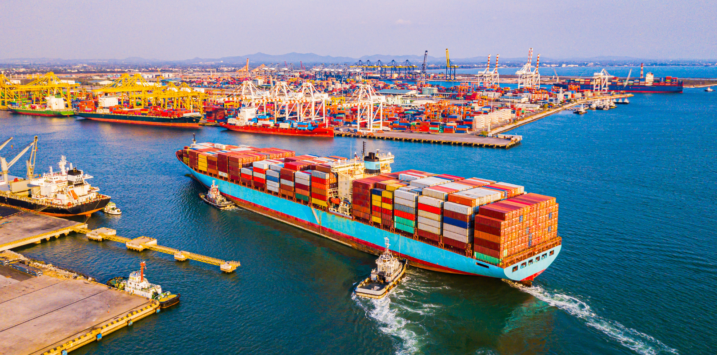
Some selling is on the way
First, it was DeepSeek, and now it’s tariffs. Investors will need to endure more volatility, while those hoping for cheaper prices to enter the market might have their wish granted this week.
You might not think Trump’s imposition of tariffs on imports from Mexico, Canada and China has anything to do with your Australian equity portfolio but think again. The next few days could see markets move materially.
Tariffs have once again taken centre stage – and this time, Trump has employed an arguably aggressive posture. Over the weekend, Donald Trump signed executive orders that slapped a 25 per cent tariff on imports from Canada and Mexico and a 10 per cent tariff on Chinese goods. The latter tariffs were in addition to the 20-30 per cent tariffs he initially implemented on Chinese imports in his first term.
Notably, these measures come without exemptions for key U.S. corporates like Apple (NASDAQ:AAPL) and Tesla (NASDAQ:TSLA) – a move Wall Street didn’t see coming. And that’s why I think markets could swing around a bit this week.
These executive orders require investors to consider the more profound implications for supply chains, corporate earnings, and broader economic conditions.
The reaction to Trump’s decision has been swift. The U.S. dollar strengthened, foreign leaders promised retaliatory measures and futures markets signaled rough waters ahead for equities. For seasoned investors, this should come as no surprise. After all, trade disruptions of this magnitude create uncertainty – and markets dislike uncertainty. But while an immediate downturn is somewhat predictable, the long-term impacts are far more nuanced.
Understanding tariffs
A tariff is a tax levied on imports, typically paid by the importer at the wholesale level. For example, a $150 retail-priced sports shoe like a Nike (NYSE:NKE) or a Hoka might only cost $20 wholesale when imported from China. If a 50 per cent tariff is applied, it adds just $10 to the import cost – a manageable increase relative to the hefty markups built into the final retail price. Companies then decide whether to absorb the added cost, pass it on to consumers, or negotiate with suppliers to share the burden.
In the past, Trump’s tariffs largely spared consumer prices, eating instead into corporate profits. But this round of tariffs is broader, affecting every sector, and will likely lead to price hikes. Companies with strong pricing power may seize the opportunity to implement a bit of price raising beyond what tariffs require, simply because they can. And that can affect official inflation numbers, which in turn might limit the extent of future rate cuts by the U.S. Federal Reserve – another negative for markets.
Sectors heavily reliant on foreign supply chains, such as consumer electronics and apparel, are possibly the first to feel the brunt of these tariffs. Companies like Apple may face tough decisions: eat the additional costs or risk alienating price-sensitive consumers by raising prices. Historically, Apple has preferred to shield its customers from price hikes, often absorbing the hit. However, given the scale of these new tariffs, even tech giants may need to reconsider their strategy.
And given big tech has been leading the market’s advance, any selling could trigger a bit of contagion.
Meanwhile, industries with U.S. domestic production capacity stand to benefit. U.S.-based manufacturers in sectors like steel, aluminium, and bicycles could see a boost, as higher tariffs make foreign alternatives less competitive. However, this isn’t a guaranteed win, and it won’t be felt immediately. Meanwhile, tariffs on imported inputs could drive up production costs, limiting the upside for local U.S. manufacturers.
Reshoring and supply chain shifts
While Trump’s intent is clear, whether these tariffs accelerate the reshoring of production to the U.S. is unclear. While the added costs of importing goods may push some firms to relocate production, others might pivot to alternative offshore locations outside the tariffed regions, such as Southeast Asia or India. Moreover, given the uncertainty surrounding future trade policy, businesses are likely to adopt a wait-and-see approach. Permanent shifts in supply chains require long-term clarity – something that’s currently lacking.
And let’s not forget Trump’s term is only four years. Companies need to make investment decisions with much longer horizons in mind.
Legally, Trump’s use of the International Emergency Economic Powers Act (IEEPA) gives him broad authority to impose tariffs without congressional approval. By framing the issue as a national security threat – citing concerns like fentanyl imports – Trump has created a legal rationale that courts are unlikely to challenge. Still, this approach underscores a loophole in trade agreements that allows national security concerns to override economic logic.
According to experts, a key component of Trump’s executive orders involves the ‘de minimis’ loophole, which had long allowed e-commerce giants to flood the U.S. market with low-cost goods without paying duties. By suspending the tariff exemption for imports from China, Mexico, and Canada, Trump has taken a step that progressive trade advocates have long demanded. However, the change only addresses one part of the problem. Importers can still avoid more stringent customs procedures, allowing low-value packages – like Shein’s $3 t-shirts – to continue flowing into the country with minimal oversight. This oversight gap maintains a competitive advantage for giants like Amazon (NASDAQ:AMZN), Temu, and Shein while disadvantaging smaller importers.
What comes next?
Investors should recognise that these executive orders are likely just the opening salvo in a broader trade restructuring. Trump has hinted at further measures, including potential tariffs on European goods. However, he lacks a U.S. trade representative to implement a coherent strategy.
The latest tariffs are just the opening shots in his approach to global trade re-negotiation and markets hate uncertainty. The S&P 500 will not like this one bit.
Roger
Good reading for an 83 year old miniscule investor.
Telling me to be patient. Good advice.
Only have 125,000 invested. ie a miniscule investor.
Regards
Thanks Thomas, that’s fantastic!